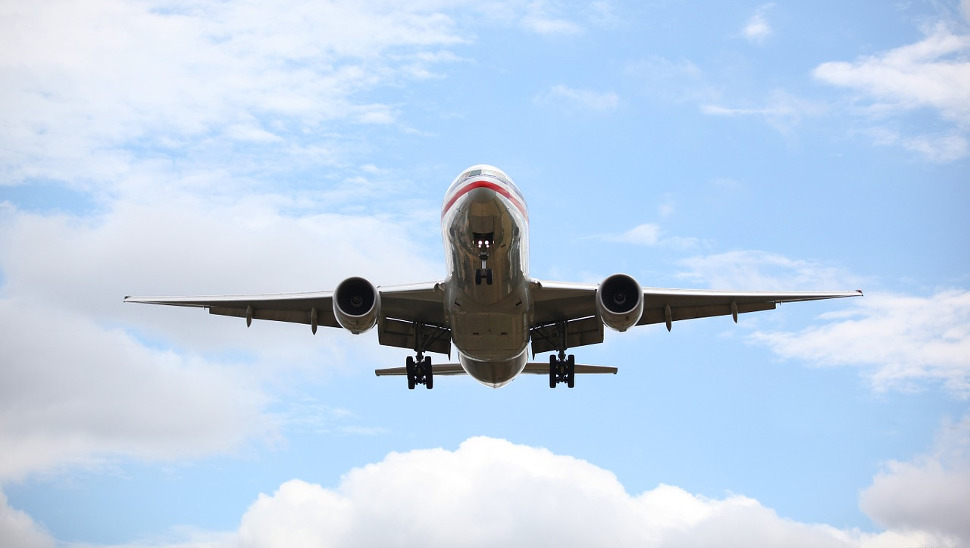Verizon, AT&T forced to delay 5G rollout due to cockpit fears
FAA warns that C-band 5G could interfere with key cockpit safety devices

US mobile carriers Verizon and AT&T have agreed to temporarily postpone their rollout of C-band 5G in order to work with the Federal Aviation Administration (FAA) to address concerns surrounding potential interference with key cockpit safety devices.
In a statement, AT&T revealed its plans to delay its new 5G deployment until the beginning of next year while a Verizon spokesperson told CNET that it would take similar measures as the company works with the government agency.
For those unfamiliar, C-band spectrum falls between 4 GHz and 8Hz and by using it for 5G, mobile carriers can bolster the range of their next-gen networks. For instance, by using this new C-band spectrum, Verizon will be able to offer peak download speeds of 1 gigabit per second to its customers using 5G smartphones.
Earlier this year, the Federal Communications Commission (FCC) auctioned off the C-band airwaves to bring in a record $81bn with Verizon and AT&T spending $45.45bn and $23.4bn respectively. These new licenses will allow both carriers to build out their 5G networks further and deliver faster speeds to their customers.
5G vs. the airlines: a brief timeline
Jan. 28: FAA greenlights 5G at the airport The FAA's ongoing battle with Verizon and AT&T over ultra-fast 5G C-band deployment around airports is finally ending: On Friday, the FAA announced an agreement on new steps that allow yet more 5G towers to operate safely around key airports.
Jan. 13: FAA reveals exactly what 5G will do to airplanes The FAA is providing the airline industry with ‘Notice to Air’ missions that detail how 5G networks could potentially affect aircraft equipment, notably altimeters that rely on frequencies located between 4.2 and 4.4GHz.
Jan. 10: 50 airports get 5G "buffer zones" Airports in New York City, Los Angeles, Chicago, Las Vegas, Minneapolis, and more are covered by the new restrictions, with some airports excluded because they do not permit low-visibility landings or because 5G towers are not close enough to cause concern.
Are you a pro? Subscribe to our newsletter
Sign up to the TechRadar Pro newsletter to get all the top news, opinion, features and guidance your business needs to succeed!
Read more ▼
Jan. 04: So much for 5G at the airport Verizon and AT&T agreed late Monday to delay the 5G C-Band rollout, after earlier in the day announcing plans to move forward with their $70 billion dollar investment in the 5G C-band spectrum and their plans to launch the service on January 5.
Jan. 03, 2022: The DoT treads into the battle A letter by Secretary of Transportation Pete Buttigieg and FAA Administrator Steve Dickson to AT&T and Verizon acknowledges the investment in 5G-C made by both companies but cautions that "the economic stakes for the aviation industry and the disruptions the traveling public would face ... are significant."
Dec. 08: FAA sets new 5G flight restrictions The FAA has issued a warning that interference from C-band 5G could result in flight diversions as the planned use of this new 5G wireless spectrum by mobile carriers poses an air safety risk.
Nov. 5: Pilots warned about 5G interference -- and carries caved Verizon and AT&T agreed to temporarily postpone their rollout of C-band 5G in order to work with the Federal Aviation Administration (FAA) to address concerns surrounding potential interference with key cockpit safety devices.
C-band 5G interference issues
The news that Verizon and AT&T would temporarily pause their deployment of C-band 5G was first reported by the Wall Street Journal.
At that time, the FAA and FCC issued a joint statement in which the two government agencies said they would work with mobile carriers to mitigate any safety concerns related to potential interference between key cockpit safety devices and 5G towers on the ground broadcasting signals over the C-band spectrum.
The FAA also issued a special information bulletin informing manufacturers, operators and pilots about potential interference between cockpit electronics and C-band 5G. This is due to safety concerns regarding how C-band 5G could potentially interfere with automated cockpit systems including those used by pilots to land aircraft in poor weather.
The wireless industry lobby group took issue with the FCC's claims that 5G could interfere with aviation equipment in a Special Airworthiness Information Bulletin, saying:
“Nearly 40 countries have already adopted rules and deployed hundreds of thousands of 5G base stations in the C-Band at similar frequencies and similar power levels—and in some instances, at closer proximity to aviation operations—than 5G will be in the U.S. None of these countries has reported any harmful interference with aviation equipment from these commercial deployments, as the Federal Aviation Administration recently confirmed.”
While Verizon and AT&T have temporarily paused their deployments, both mobile carriers plan to resume them early next year.
Looking to boost your internet speeds on the go and at home? Check out the best 5G smartphones and best Wi-Fi 6 routers
Via CNET
After working with the TechRadar Pro team for the last several years, Anthony is now the security and networking editor at Tom’s Guide where he covers everything from data breaches and ransomware gangs to the best way to cover your whole home or business with Wi-Fi. When not writing, you can find him tinkering with PCs and game consoles, managing cables and upgrading his smart home.
